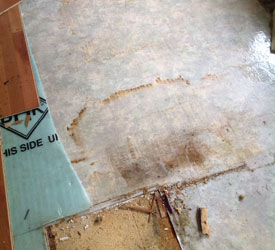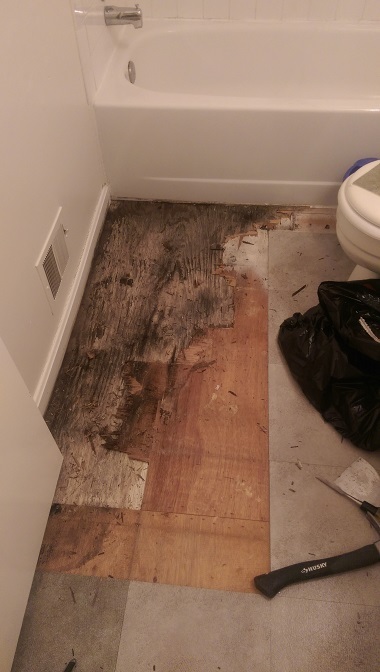How to Help Prevent Water Damage in Your Bathroom
How to Help Prevent Water Damage in Your Bathroom
Blog Article
What're your thoughts with regards to Common Causes of Water Damage in a Bathroom?

The bathroom is incredibly at risk for wet accumulation as well as possible water damage because of the constant use water in it. This article provides basic examination techniques to assist identifying water damage risks.
The regular use water in the bathroom makes it extremely prone for wet buildup and prospective water damages. By evaluating it routinely, you can reduce water associated problems.
The complying with set of assessments is very easy to do as well as should be done once in every three months in order to maintain your bathroom healthy and to avoid potential water problems brought on by the tub, the shower, pipe joints as well as plumbing, sinks, cabinets, as well as the bathroom
Do not forget executing these assessments and also be detailed while performing them. Keep in mind that these easy examinations can conserve you a great deal of money by supplying early indications for water damages
Sinks and also Cabinets
Sinks as well as cabinets are exposed to dampness as well as moisture day-to-day and are usually forgotten. Examine routinely under the sink as well as on the countertop over it. Repair any drip in the catch as it may recommend drainpipe problems. Take a look around the sink, sluggish draining pipes might indicate a blocked drain. Change sink seals if they are split or loosened.
Bathtub and Shower
The shower and bath tub require special attention as well as maintenance. Inspect the ceramic tiles and also change if split. See to it that there is no missing grout between the tiles. Inspect and replace split caulking at joints where the walls meet the floor or the bath tub. Clogged drains pipes as well as pipes issues will prevent the tub from drying out as well as might suggest significant problems below the bath tub. Seek advice from a specialist promptly to avoid architectural damages. Take notice of discolorations or soft areas around the bath tub wall surfaces as they may show an internal leak.
Plumbing
Signs for water damages are tough to spot since a lot of pipelines are mounted inside the wall surfaces.
Pay special interest to flooring as well as walls dampness as well as spots as they may indicate an invisible plumbing trouble. Check dampness levels in adjacent areas too.
The Toilet
The bathroom is a susceptible water joint. Check the water lines as well as look for leakages around the toilet seat, in the hose pipe, as well as under the water container. If you discover any kind of signs of wetness on the flooring around the bathroom, look for leakages in the toilet rim and storage tank seals.
Realize that hanging commode dish antiperspirants boosts the chances for obstructions.
Water Damage Signs In The Bathroom To Avoid Cleanup
Musty smell
This is one of the easiest signs to catch because musty smells are so odorous. The damp, earthy, moldy smell should be a big red flag. The smell will develop when moisture gets trapped in surfaces, and begins to facilitate mold growth. Leaking pipes under cabinets, inside walls, and behind shower fixtures will cause moisture to stay trapped and not dry, which will lead to mold growth and spread. As soon as you notice any musty smells in your bathroom, have it checked for hidden water damage and cleanup signs.
Visible mold
If the smell isn’t there to give it away, sometimes you will actually see mold growth. Finding mold in your bathroom is a serious problem, because mold is very harmful to your health. By the time mold growth is visible, it also means that water damage has already occurred and been present for some time. The only way the mold problem can be resolved is to find the source of the moisture and get it stopped. To safely and adequately remove mold, you need to have professionals handle the remediation. Do not waste any time in getting mold problems addressed, fixed, and sanitized so that you can protect you and your family from the many respiratory symptoms caused by mold exposure.
Damaged floors
Bathroom floors should be able to withstand some exposure to water while still remaining in good condition. However, when excess exposure or water leaks occur, they will begin to damage even the most water-resistant flooring. If you notice any cracking, bubbling, staining, or warping on your bathroom floors, there is probably a water leak somewhere causing the distortion. If you notice areas of the floor have become softer, or even have a spongy feeling, there is probably damage to the subfloor. Subflooring is typically made up of plywood. When plywood is exposed to water or moisture, it will absorb it. Once it has become saturated, the weight of the excess water will cause the wood to swell and soften. Check the floors in your bathroom frequently to catch any of these sings before they lead to damaged subflooring.
Changes on walls
When water leaks behind walls, it will cause changes in the drywall. Peeling plaster, blistering paint, and soggy wallpaper are all good indicators that excess water is building up behind the wall. Water leaking behind drywall will cause it to swell and be soft to the tough. If you start to notice gaps along the trim of your walls, or where tile meets the wall, it could also be a strong indicator that there is a leak behind the wall. Any changes, distortion, or damage on the walls should be evaluated as soon as you notice it to prevent further water damage and cleanup.

We hope you enjoyed our piece on How to Fix a Water Damage Bathroom. Thanks so much for spending some time to browse our post. Sharing is good. Who knows, you might be helping someone out. Thanks a bunch for your time. Don't hesitate to come visit our blog back soon.
Call Today Report this page